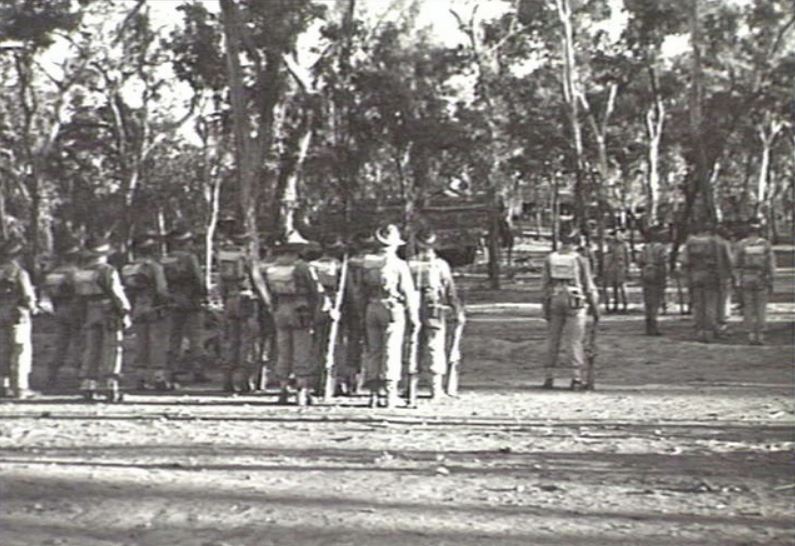Difference between revisions of "28th Australian Infantry Battalion (The Swan Regiment)"
From Our Contribution
(→Notes) |
(→Battalion Personnel) |
||
| Line 24: | Line 24: | ||
===Battalion Personnel=== | ===Battalion Personnel=== | ||
* [[William Francis Buck]] | * [[William Francis Buck]] | ||
| − | * [[Alexander James Harris]] | + | * [[Alexander James Harris]] 3 Jan 1940 - ??? |
* [[Harold Philip Orton]] | * [[Harold Philip Orton]] | ||
* [[Ernest John Peters]] | * [[Ernest John Peters]] | ||
Revision as of 16:04, 29 September 2020
 28th Battalion troops conducting a changing-of-the-guard ceremony in Darwin, August 1944 - AWM photo 067977 | |
Contents
Brief History
Raised in early 1915 as part of the First Australian Imperial Force to fight in the final stages of the Gallipoli campaign and then in France. It was disbanded in 1919, but re-raised as a part time unit in 1921 to be based in Western Australia.
The battalion was in camp at Melville when Japan entered WW2. Following training the battalion moved to Maida vale as a second line reaction unit in case of invasion, and then to Chidlows in April 1942. IN May they moved north to Moora to carry out a similar role for the Geraldton area. Following a short rest in June at Bellevue, the battalion moved back to Moora in July and then to Dandaragan for October and November, with a short break at Point Walter in November. In January 1943 they had moved back south to Chidlows, and in February along with the rest of the 13th Brigade they moved to provide a part of the defence for Darwin. They were positioned 49.5 miles ( (83 kms) from Darwin as part of the second of the three rings of defence, patrolling the hinterland and acting as reserve for the other two Brigades.
In November 1943 they undertook amphibious landing training at Mindil Beach and with the reduced threat to Darwin were re-organised on a tropical scale in preparation for deployment to New Guinea. In August, the 28th Battalion was brought up to strength and departed Darwin for Jacquinot Bay on the south coast of New Britain in November. On arrival the battalion established a base at Wunung Plantation with the Japanese now confined to an area around Rabaul. IN January 1945 the arrival of further troops allowed the 28th Battalion to move to Palmalmal Plantation, and then in April to Watavalo Plantation, rotating with the 11th Battalion at the Tol Plantation. The battalions continued to patrol towards Rabaul until the end of the war, and after the Japanese surrender they formed part of the force that occupied Rabaul.
Battalion Personnel
- William Francis Buck
- Alexander James Harris 3 Jan 1940 - ???
- Harold Philip Orton
- Ernest John Peters
Battle Honours
Individual Honours
Notes
Content has come from The Unit Guide - Volume 2 - The Australian Army 1939-1945 , pages2.225 & 2.226 - Graham R McKenzie-Smith - Big Sky Publishing - 2018